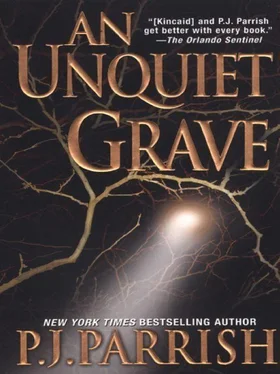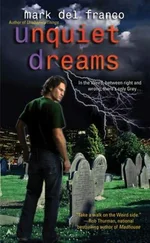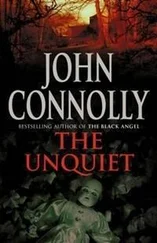P. Parrish - An Unquiet Grave
Здесь есть возможность читать онлайн «P. Parrish - An Unquiet Grave» весь текст электронной книги совершенно бесплатно (целиком полную версию без сокращений). В некоторых случаях можно слушать аудио, скачать через торрент в формате fb2 и присутствует краткое содержание. Год выпуска: 2006, Издательство: Kensington Publishing Corp – A, Жанр: Триллер, на английском языке. Описание произведения, (предисловие) а так же отзывы посетителей доступны на портале библиотеки ЛибКат.
- Название:An Unquiet Grave
- Автор:
- Издательство:Kensington Publishing Corp – A
- Жанр:
- Год:2006
- ISBN:нет данных
- Рейтинг книги:4.5 / 5. Голосов: 2
-
Избранное:Добавить в избранное
- Отзывы:
-
Ваша оценка:
- 100
- 1
- 2
- 3
- 4
- 5
An Unquiet Grave: краткое содержание, описание и аннотация
Предлагаем к чтению аннотацию, описание, краткое содержание или предисловие (зависит от того, что написал сам автор книги «An Unquiet Grave»). Если вы не нашли необходимую информацию о книге — напишите в комментариях, мы постараемся отыскать её.
An Unquiet Grave — читать онлайн бесплатно полную книгу (весь текст) целиком
Ниже представлен текст книги, разбитый по страницам. Система сохранения места последней прочитанной страницы, позволяет с удобством читать онлайн бесплатно книгу «An Unquiet Grave», без необходимости каждый раз заново искать на чём Вы остановились. Поставьте закладку, и сможете в любой момент перейти на страницу, на которой закончили чтение.
Интервал:
Закладка:
“Well, I’d have to put it in perspective for you.”
Louis wasn’t sure if she was patronizing him or not. But he knew if he was going to get anything helpful from this woman, he had to appeal to her ego.
“Your opinion could help me, Doctor,” he said.
She leaned back in her leather chair. “I’d say you’d have to go back to the Civil War to get a clear idea of what has happened in mental health. After the war, many soldiers suffered from what we now call post-traumatic stress syndrome. But then, they just warehoused them in asylums so no one had to deal with them. The places were so overcrowded, doctors got desperate and went back to using restraints, shock therapy-and mass doses of opium.”
Louis shook his head slowly.
“By the turn of the centur y, asylums were opening up all across the country, most of them modeled after the Victorian design of a man named Thomas Kirkbride,” Dr. Seraphin went on. “He had the idea of putting the least disturbed patients closer to the center building to encourage interaction with the staff. But if the patients’ conditions worsened they were relocated farther away.”
“Like in E Building,” Louis said.
She leveled her sharp gaze at him. “You’ve seen E Building?”
“I’ve been on the grounds.”
“Well,” she went on, “then you know that Hidden Lake was like a small city. All the asylums like it were. They were very efficient communities with their own farms, dairies, greenhouses, transportation systems-and graveyards, of course. And most of the patients worked to support the ‘family,’ so to speak.”
She paused, then opened a desk drawer. After a moment of rummaging through some files, she pulled out a small card and a yellowed newspaper clipping. “I kept these when I left Hidden Lake.”
She handed them to Louis. The postcard was an old color-tinted photograph of the Hidden Lake grounds with people sitting on the grass around a lake with weeping willows in the foreground and the Victorian spires of the asylum in the background. The lettering said GREETINGS FROM HIDDEN LAKE. The newspaper clipping was from the Detroit Journal dated 1906. It was a cartoon showing a group of hobos gathered around a piano in a parlor singing. The caption said WELCOME TO HOTEL HIDDEN LAKE.
“I don’t get it,” Louis said, looking at Dr. Seraphin.
“Respectability,” she said with a small smile. “The postcards were sort of an early PR campaign, sent out so family and friends of the patients felt better about committing their loved ones.”
She nodded to the clipping. “Respectability brought lots of new customers. Adult children who couldn’t cope with their aging parents would just commit them, thinking Mom or Dad would be just fine.” She let out a sigh. “And in the winter, the asylums would fill to bursting with the homeless who had nowhere else to go.”
Louis remembered Alice’s explanation of the POGs, the “poor old guys.”
“Many of the people in these places weren’t mentally ill at all,” Dr. Seraphin said. “But there were no real criteria for accepting or rejecting patients, so asylums became dumping grounds to just hide away anyone society didn’t want to deal with.”
Louis stared at the cartoon for a moment, then put it down. “Depressing,” he said.
“The severe overcrowding led to a sharp decline in care,” Dr. Seraphin went on, “which led to a return to old practices like restraints, ice baths, and shock therapy. But then, in the 1930s, mental health got the answer to its problems-transorbital lobotomy.”
“That’s what they gave to Jack Nicholson in that movie,” Louis said.
Dr. Seraphin gave a nod and a grimace.
“How did it work?” Louis asked.
Dr. Seraphin let out a long breath. “First they would sedate the patient, then insert a device through the eyelid into the frontal lobe. They would then tap the device with a hammer and after the appropriate depth was achieved, manipulate the device back and forth in a swiping motion within the patient’s head.” She paused. “It was very quick, very efficient, and very popular.”
She saw the horrified look on Louis’s face and went on.
“The lobotomy was mental health’s darkest hour, and I only tell you this so you can understand how far we have come,” she said.
Louis leveled his eyes at her. “I’m here to learn from you, Doctor, not condemn you.”
She was silent for a moment. Then she carefully gathered up the old postcard and the newspaper clipping and slipped them back in her desk drawer.
“So how did things get from lobotomies to mass patient releases?” Louis asked.
Dr. Seraphin looked up. “To oversimplify things, Thorazine.”
“That’s a drug,” Louis said.
She nodded. “Thorazine and other drugs made it possible to cut down on the time patients needed to spend in hospitals. Plus, opinion shifted. It was thought that with proper medication, patients could function on their own in society.”
She toyed with the edge of a folder on her desk. “The intention was good. The idea was to protect the rights of mental patients.”
Louis was getting impatient. “So how does this explain how a serial rapist and murderer could have been let loose?”
Her eyes shot up to his. “I am sure that did not happen at Hidden Lake.”
Louis shook his head slowly. “With all due respect, Dr. Seraphin, what you have been describing makes me believe just about anything is possible.”
She stared at him for a moment, then folded her hands and placed them on the desk. “In 1960, there were half a million people in mental institutions in this country,” she said. “Things changed fast-legislation, insurance, public opinion, psychiatry. Places like Hidden Lake were expected to do everything-train staff, treat and diagnose outpatients, do research. Before, Hidden Lake had been like a caretaker, but it got so we were being asked to do everything with no funding or support. It was like a Model T trying to compete in the Indy 500.”
She paused. “I knew it was going to end,” she said softly. “I had worked at Hidden Lake for more than twenty years, but I knew the world was closing in on us and it was just a matter of time.”
Louis waited. The doctor was staring at her folded hands. Finally she looked up. “The end for places like Hidden Lake came, for all practical purposes, in 1972.”
“Why then?” Louis prodded.
“A federal court ruled that patients couldn’t work unless they were paid.”
She gave a small laugh. “Sounds so benign, doesn’t it? But that was the proverbial straw that broke the camel’s back. We had always relied on the patients to run Hidden Lake-the gardens, the dairy, the kitchens, the apple orchards. We made quite a tidy profit selling apples and cider and such.”
She looked up at Louis. “But it wasn’t just the money. The work was good for the patients. It gave them a sense of purpose, of being part of something real and productive.”
She shook her head. “After that, there was more pressure to move patients. We were even given monetary rewards for decreasing the number of our inpatients. We released three-fourths of our population in the early seventies.”
“Where did they go?” Louis asked.
“Halfway houses, nursing homes, some back to their families.” She shook her head slowly. “Many just ended up on the street. It was very traumatic for patients.”
Louis thought of the homeless men and women he had seen crouched in the storefronts of downtown Fort Myers or hunched on beachfront benches. He thought of Charlie, finding his way to the gates of Hidden Lake with nowhere else to go.
And he thought of some faceless, senseless, murderous man who had somehow been let loose from Hidden Lake decades ago and now had come back to haunt its ruins.
Читать дальшеИнтервал:
Закладка:
Похожие книги на «An Unquiet Grave»
Представляем Вашему вниманию похожие книги на «An Unquiet Grave» списком для выбора. Мы отобрали схожую по названию и смыслу литературу в надежде предоставить читателям больше вариантов отыскать новые, интересные, ещё непрочитанные произведения.
Обсуждение, отзывы о книге «An Unquiet Grave» и просто собственные мнения читателей. Оставьте ваши комментарии, напишите, что Вы думаете о произведении, его смысле или главных героях. Укажите что конкретно понравилось, а что нет, и почему Вы так считаете.












